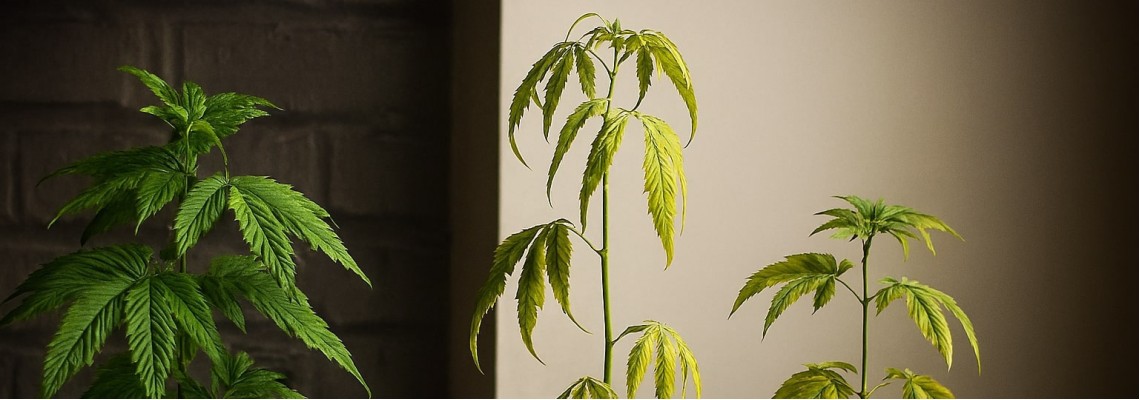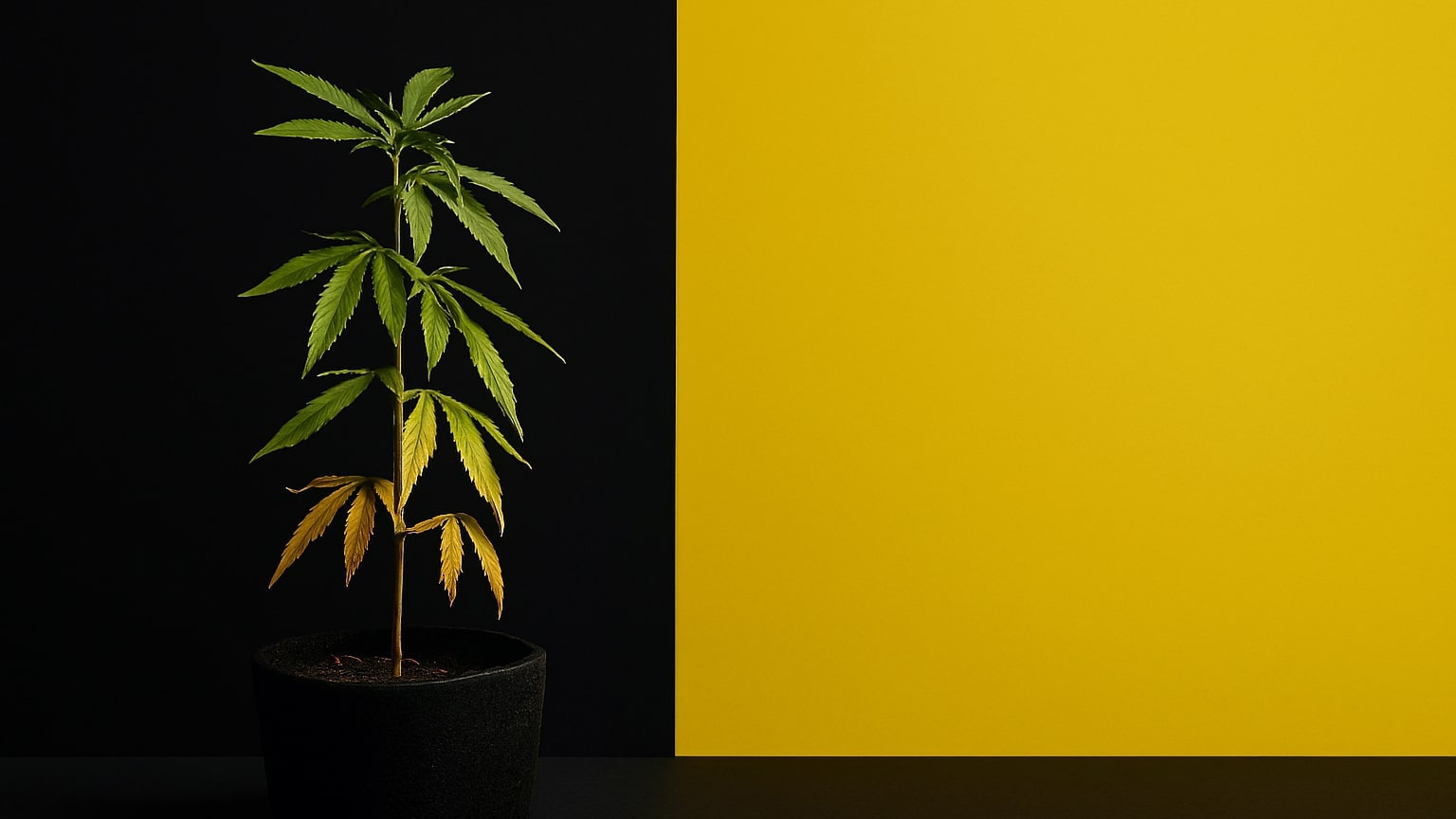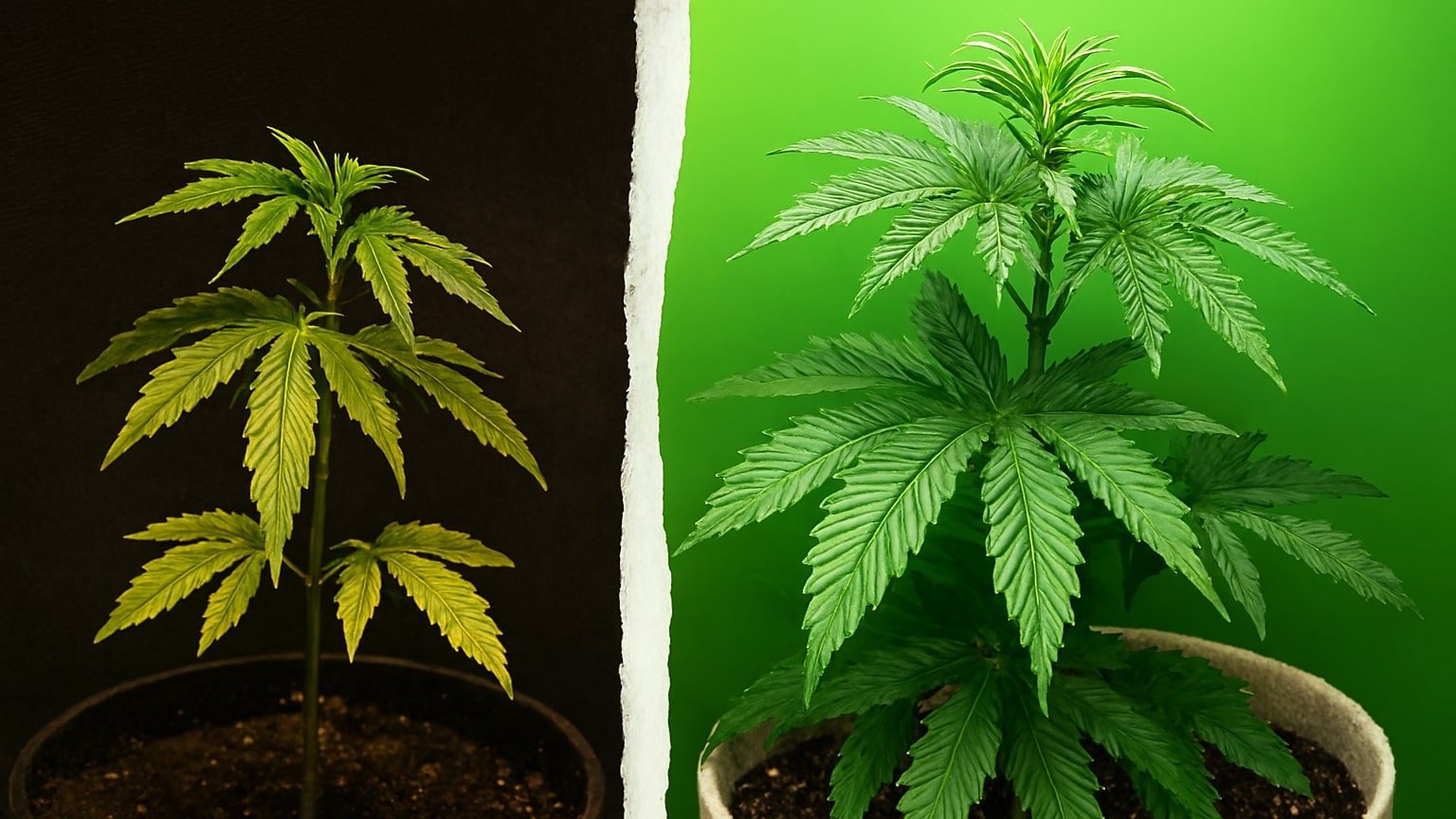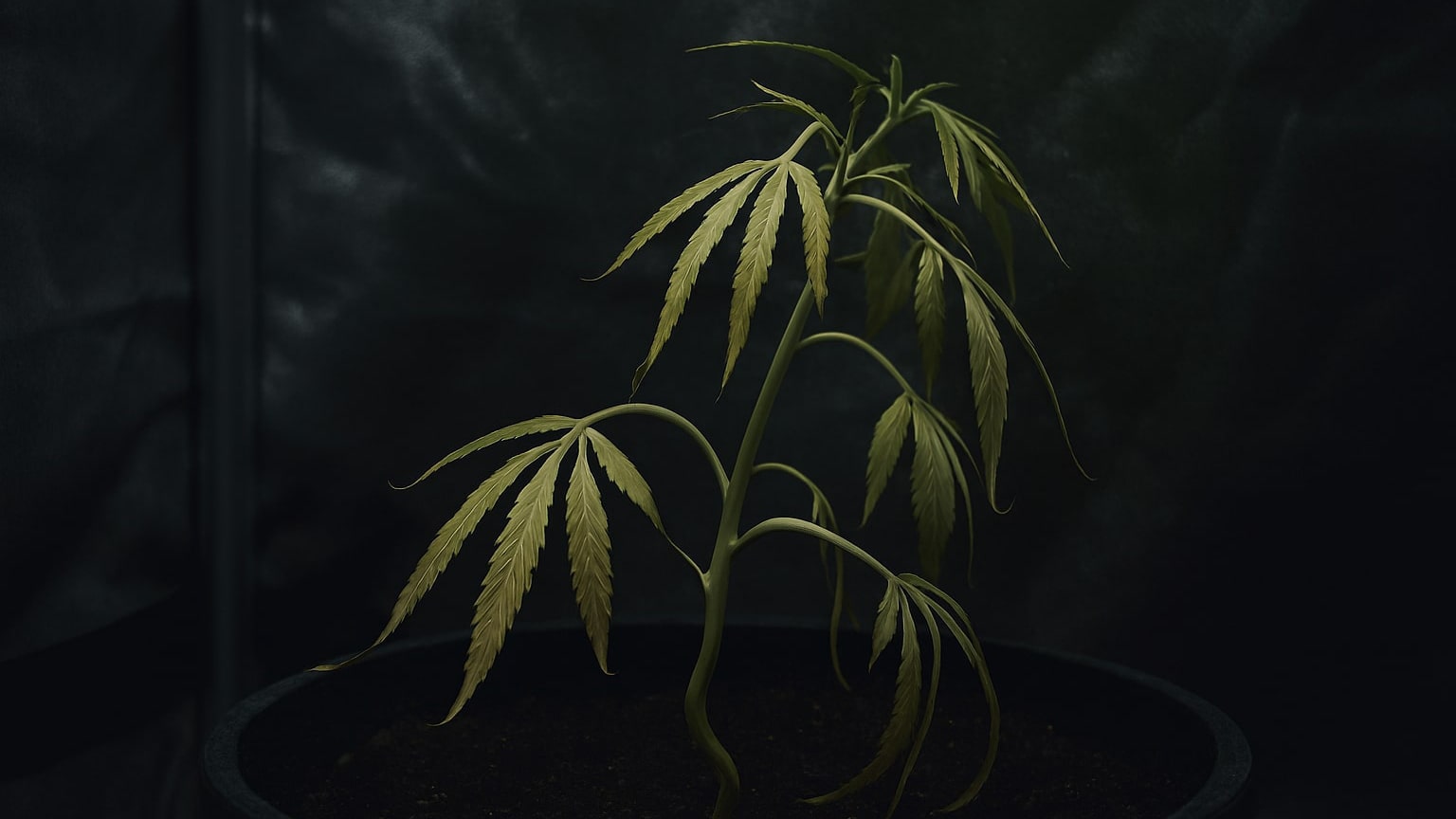There seems to be nothing in your cart.
Didn't find what you were looking for? Contact our consultant.
To save your shopping cart until your next visit, create an account or register .
Browse our Hits sales
There seems to be nothing in your cart.
Didn't find what you were looking for? Contact our consultant.
To save your shopping cart until your next visit, create an account or register .
Browse our Hits sales

Contents
In order for hemp to grow healthily and produce a stable yield, it needs high-quality lighting. Light plays the same role as nutrition—without it, photosynthesis is impossible, and therefore plant development is also impossible. When lighting becomes insufficient, the crop reacts immediately—it is important to notice the first warning signs in time.
The main signs of light deficiency in plants appear gradually. First, the leaves of the cannabis plant become lighter in color due to lack of light, especially on the lower tiers. This means that the plant lacks the energy to produce chlorophyll. Then the stem begins to stretch upward—this is how the plant tries to “reach” the light source. This process is called light starvation in cannabis.
If cannabis is not growing, light is the main suspect. With a light deficit, marijuana shoots slow down noticeably, leaves lose their density and elasticity, and large gaps appear between the nodes. Over time, the bush weakens, and the formation of inflorescences slows down or stops altogether.
To avoid such problems, it is important to provide the right lighting conditions for cannabis — after all, uniform light allows the plant to maintain a balance between growth, flowering, and resin production.

When it becomes apparent that plants are growing slowly, stretching out and losing their rich green color, these are clear signs that the cannabis is not getting enough light. The situation can be remedied by taking timely measures and adjusting the lighting correctly. Ideally, you should take a comprehensive approach to the process, because growing cannabis from A to Z requires precise control of all factors: light, temperature, and nutrition.
Here are some effective steps from experienced growers that can eliminate light deficiency in marijuana:
If all these measures are carried out correctly, the plant will quickly restore its balance and return to active growth. The main thing is to ensure that the light is evenly distributed and that the leaves do not overheat.

In order for the plant to develop fully, it is necessary to create the right lighting conditions for cannabis. Light affects not only growth, but also the amount of resin, bud density, and overall crop quality. Many beginners underestimate this factor, which is why the most common mistakes made by novice growers are related to the wrong choice of lamps, their height, and lighting mode.
| Plant development stage | Lighting mode | Light intensity | Care features |
|---|---|---|---|
| Seedlings | 18–24 hours of light | 300–400 μmol/m²/s | Soft lighting prevents stretching |
| Vegetation | 18–20 hours of light | 400–600 μmol/m²/s | Active growth of green mass and roots |
| Flowering | 12 hours of light / 12 hours of darkness | 600–900 μmol/m²/s | Formation of dense inflorescences and resin |
It is important to remember that lighting for growing cannabis must be uniform—light must reach all parts of the plant. It is best to position the lamps so that each branch receives sufficient light, otherwise the lower leaves will begin to wilt.
The most common mistakes made by novice growers include:
Properly adjusted lighting is the key to strong bushes and high yields. If the grower understands how to regulate the intensity and duration of daylight hours, even in limited conditions, the plant will develop harmoniously.

Attention! Errors Seeds does not encourage you to grow cannabis and does not promote it in any way. Cultivation is prohibited by the legislation of Ukraine. The article is of scientific and introductory interest only.